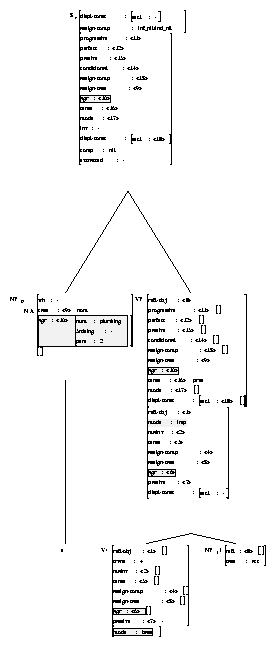



Next: Gerund NP's
Up: Sentence Types
Previous: Discourse Conjunction
Imperatives
Imperatives in English do not require overt subjects. The subject in
imperatives is second person, i.e. you, whether it is overt or
not, as is clear from the verbal agreement and the interpretation.
Imperatives with overt subjects can be parsed using the trees already
needed for declaratives. The imperative cases in which the subject is
not overt are handled by the imperative trees discussed in this section.
The imperative trees in English XTAG grammar are identical to the declarative
tree except that the NP0 subject position is filled by an ,
the
NP0 <agr pers> feature is set in the tree to the value 2nd
and the <mode> feature on the root node has the value imp. The
value for <agr pers> is hardwired into the epsilon node and insures
the proper verbal agreement for an imperative. The <mode> value of
imp on the root node is recognized as a valid mode for a matrix clause.
The imp value for <mode> also allows imperatives to be blocked
from appearing as embedded clauses. Figure 17.1 is the
imperative tree for the transitive tree family.
- {Transitive imperative tree: $\alpha$Inx0Vnx1




Next: Gerund NP's
Up: Sentence Types
Previous: Discourse Conjunction
XTAG Project
http://www.cis.upenn.edu/~xtag

